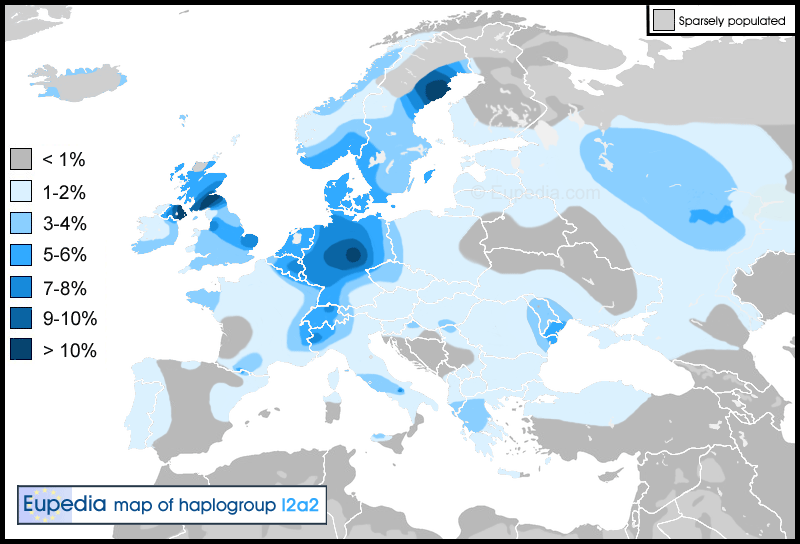May I call your attention to the very small, but highly concentrated dot located in South-Central Italy, which highlights an unusually high occurrence of the haplogroup I2a2 (specifically I2a2a3).
I have a few questions regarding this specific population, because I don't believe anyone's really commented much about it before.
First, where is the original article/paper that cites this region as having such a high concentration of I2a2a3?
Second, I've read that this specific population might have originated from the Lombard invasion of Southern Italy during the 8th Century following the decline of reliably-enforced Byzantine authority there. This population is said to have founded the city of Campobasso, and supported the independence of the Duchies of Benevento and Spoleto against the Byzantines. Is this correct/commonly accepted as the prevailing theory? Are there perhaps other theories out there? If so, elaborate.
Third, what does this high concentration of the I2a2 haplogroup within a region of Italy mostly devoid of that group say about the population that lived there? Has this population simply remained relatively untouched since the Middle Ages? Did they perhaps not intermarry much with other haplogroup populations or move? Let me hear your thoughts on this.
Thank you in advance.
- Ambarenya
I have a few questions regarding this specific population, because I don't believe anyone's really commented much about it before.
First, where is the original article/paper that cites this region as having such a high concentration of I2a2a3?
Second, I've read that this specific population might have originated from the Lombard invasion of Southern Italy during the 8th Century following the decline of reliably-enforced Byzantine authority there. This population is said to have founded the city of Campobasso, and supported the independence of the Duchies of Benevento and Spoleto against the Byzantines. Is this correct/commonly accepted as the prevailing theory? Are there perhaps other theories out there? If so, elaborate.
Third, what does this high concentration of the I2a2 haplogroup within a region of Italy mostly devoid of that group say about the population that lived there? Has this population simply remained relatively untouched since the Middle Ages? Did they perhaps not intermarry much with other haplogroup populations or move? Let me hear your thoughts on this.
Thank you in advance.
- Ambarenya


